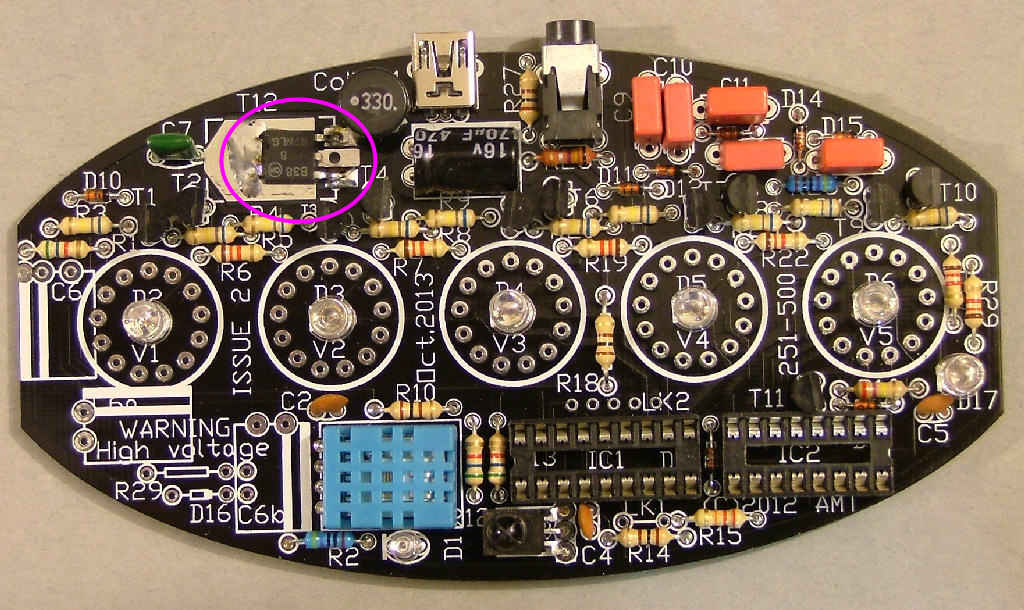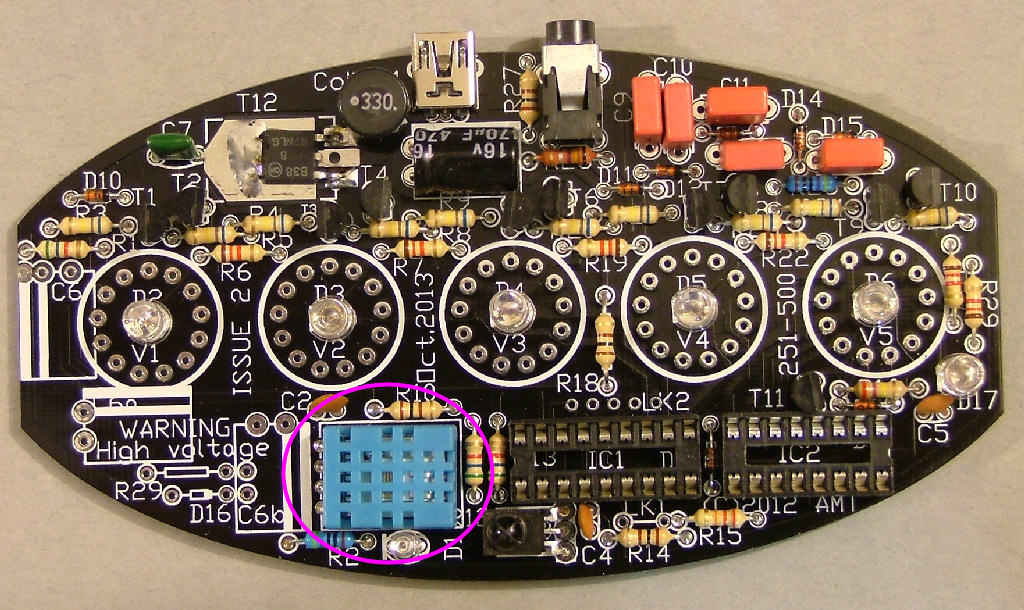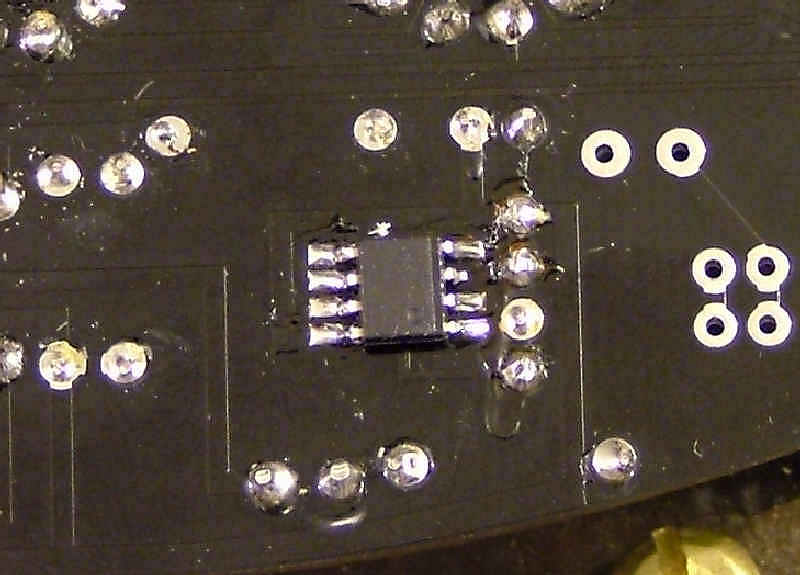Take the 2x nixies (1x IN-19A and 1x IN-19b) out of their packing and straighten the wires, spreading them out slightly to match the diameter of the socket. If any are uneven or slightly longer than the others you can trim them a little to match - but not too much. They're already cut to approximately the right length before being packed.
Note the white ceramic paint on one of the wires inside the tube, at the back. This is the anode and must face directly to the back of the PCB when fitted. Ignore the short wire stub at the front, it's a second anode which isn't counted as a real pin and can be removed if preferred.
Take the IN-19b nixie tube from the pack of 2:
Starting with that anode wire, fit it into the topmost hole of the socket in the V5 position, follwed by one wire in sequence into each hole. Make sure the white-topped anode lead is still in the correct place, it's easy to slip one place whilst fighting (or fitting) it in. Push it down carefully into the socket pins until it sits on top of the LED - this acts as a spacer holding it above the PCB in the correct place:

Now repeat this with the nixie marked IN-19A, in the V4 socket.
Take the 3x IN-14 nixies out of their packing and straighten the wires as before. Fit one into the socket for V3, followed by V2 and V1. You should now have 3 numerical tubes on the left followed by the IN-19A and with the IN-19b on the right.
Once you're certain they're in the right places and are vertically aligned you may wish to solder 2-3 of the wires into the socket pins to prevent them being dislodged if bumped though in everyday use they will stay in the sockets as the 13 wires combined have quite a tight hold.




